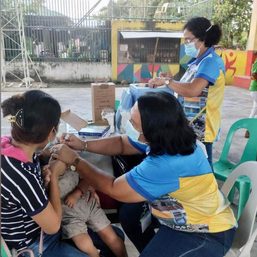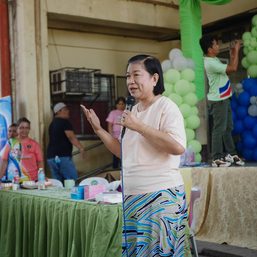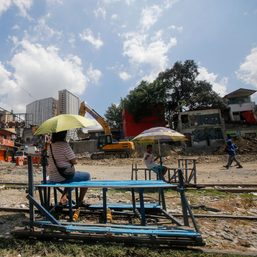SUMMARY
This is AI generated summarization, which may have errors. For context, always refer to the full article.
Health Secretary Francisco Duque III claimed that the Philippines has “successfully flattened the curve since April” even as cases of COVID-19 in the country continue to rise.
Duque made the statement during the government’s pre-SONA forum on Wednesday, July 15, when he was asked about the rising cases of the disease in the country.
“The metrics for arriving at that conclusion of flattening the curve is one, case doubling time of the COVID-19 infection has actually become longer. It used to have a very short case doubling time of 2.5 days during the initial phase of the pandemic,” Duque said.
Case doubling time is the period it takes for infections to double in an area.
Case doubling time for the country lengthened to 8.18 days as of July 12, compared to 7.95 days as of July 3, the Department of Health (DOH) said.
“The other metric to say that we have flattened the curve is also the mortality doubling time has also [gotten] longer and is now in the moderate risk classification,” Duque added.
In May, Duque received backlash from the public and lawmakers alike after he claimed in a Senate inquiry on May 19 that the Philippines was already on the second wave of coronavirus infections.
In the hearing, Duque said the government considered the first 3 imported cases in the Philippines from January to early February as the “first wave.” The worst-case scenario was that we would even reach a “third wave,” Duque said.
He later backpedaled, saying the country was on the “first major wave of sustained community transmission.” (READ: First wave, second wave? Duterte officials clash on where PH is in pandemic)
‘Window of opportunity’
According to Duque, the supposed flattening of the curve provided a “window of opportunity” to improve, increase, and ramp-up our health systems capacity.
But Senate Majority Leader Juan Miguel Zubiri, who himself had tested positive for the coronavirus, reacted to Duque’s claim and asked the health secretary to explain “what curve is flattening.”
“Is it the fact that the cases in April were at an average of 200 a day as compared to the daily average of over a thousand cases today? Or is it the fact that we will soon be number one in Southeast Asia in terms [of] COVID-19 cases?” he said in a statement.
“The only thing that is flat are the backs of all the poor patients in fully occupied COVID-19 wards all around Metro Manila fighting for their lives! ‘Wag mag bulag-bulagan (Don’t turn a blind eye), and act to stop the surge instead of imagining it.”
Duque later clarified his statement and said that “our case doubling time in April passed the 3-day doubling time mark.”
“Now, July 15, it is at 8 days CDT or case doubling time (past the 7-day doubling time mark),” Duque said in a tweet on Wednesday afternoon.
Duque further explained that “we bent the curve in April” due to quarantine measures, but there’s an increase in cases due to expanded testing protocol and easing of quarantine measures.
Bed capacity, backlogs in testing
On Tuesday, July 14, the DOH said that Metro Manila had reached the “danger zone” in terms of bed capacity for coronavirus patients, while 4 other regions were already at the warning level.
According to data by the DOH, 76% of beds for COVID-19 patients in the National Capital Region have already been occupied, placing it in the “danger zone” for nearing full capacity.
Meanwhile, at least 4 Metro Manila hospitals announced that they have already reached full capacity of allocated COVID-19 beds in their intensive care units as of July 14.
As of Monday, July 13, the country has a backlog of 13,457 tests based on DOH’s weekly situation reports. (READ: RITM scales down operations again after staff tests positive for COVID-19)
The government was able to reduce the backlog in late June to only 3,608 tests, but the number rose again in early July. The DOH reported over 1,000 daily confirmed coronavirus cases for 10 straight days, from July 2 to 12.
As of Monday, the country has 85 licensed testing hubs, while its testing capacity hovered around 16,000 to 21,000 daily tests last week. This is still below the 30,000 testing capacity that the government targeted to have in May.
The country has so far tested over one million individuals out of the government’s total target of two million or 2% of the country’s 110 million population.
On Tuesday, the Philippines recorded 634 new cases of the disease, bringing the total cases in the country to 57,545, including 1,603 deaths and 20,459 recoveries.
The DOH said the continued increase in cases is a reflection of an expanded testing capacity, but it also cited the easing of quarantine measures as another factor.
University of the Philippines researchers projected the country could reach 60,000 cases by the end of July. – with a report from Aika Rey/Rappler.com
Add a comment
How does this make you feel?





There are no comments yet. Add your comment to start the conversation.